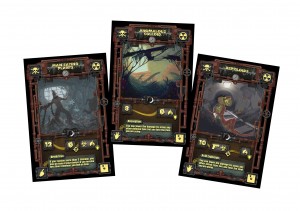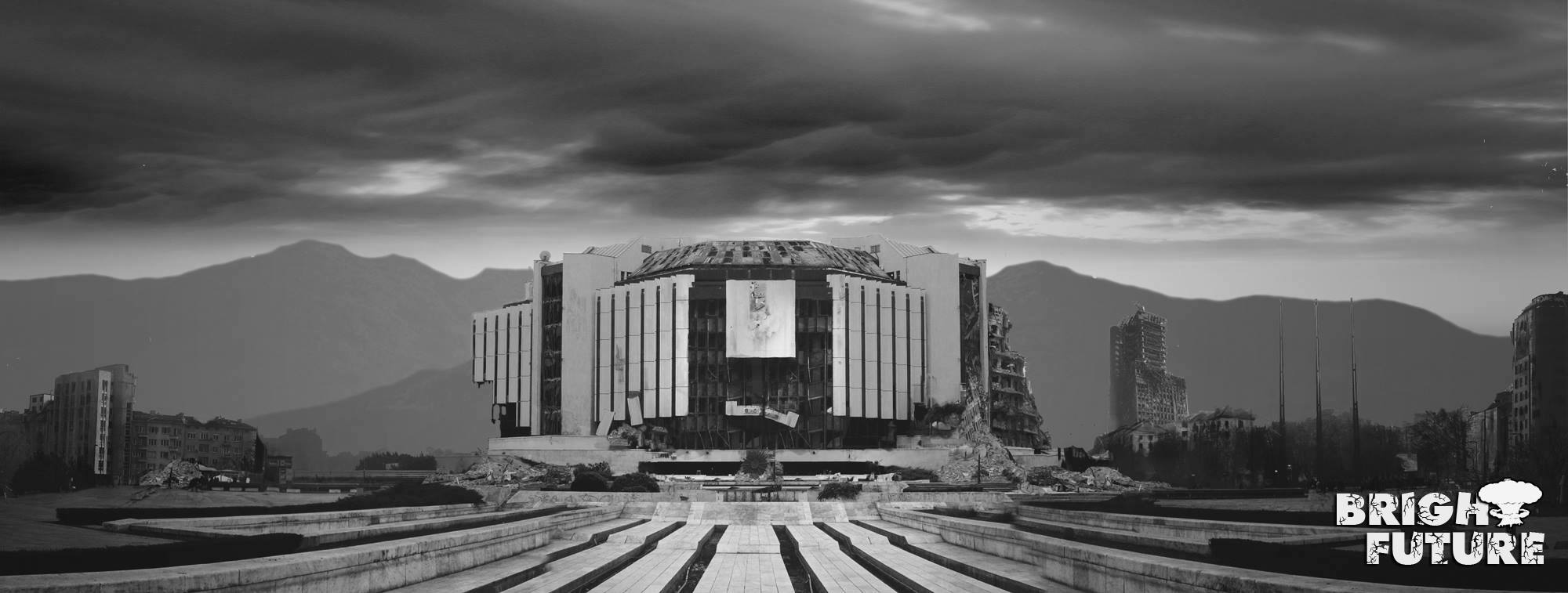Gadina Prokleta is the founder of his own boardgame studio, and as we near the release of Bright Future, I spoke to him about its upcoming launch.
 How did you first come up with the idea for Bright Future?
How did you first come up with the idea for Bright Future?
Do you remember the mass hysteria about 20.12.2012 two years ago? Public media got crazy with all kinds of silly rumors about an expected “end of the world” because of the end of the Mayan calendar. Well, a bunch of guys exploited the occasion and announced a post-apocalyptic party on the same date. Two weeks beforehand they asked me, as a freelance gameplay designer, to create a party game for the event. The time really was not enough, but I managed to create a strange hybrid between a party game and an interactive story.
Even though it was kinda raw and untested, people got really excited about it and they did like it during the party. This game had the same general concept and game goal as Bright Future, so it’s not a surprise that a few months later I began to wonder – what if I reworked the mechanics such that all of the variety of the game were to be compressed into a set of cards? And then here we are.
 How long have you been working on Bright Futures? Is this your first game of its type?
How long have you been working on Bright Futures? Is this your first game of its type?
A year or so. I had a clear concept in Autumn 2013 and in October or November I gathered a team and we started working on the art and design. I have never worked on a typical board game before. I have created many map-based game prototypes – maybe like everyone else who loves board or RPG games. They were fun and sometimes good, but not good enough to be published.
On the other side, I have quite an experience with organizing live-action role play games (Stalker LARP Bulgaria and others) and with an RPG survival game based on Warcraft 3 (Jungle Trolls Reborn).
You mentioned that you were inspired by the Metro series of books by Dmitry Glukhovsky. How similar are the underground tunnels in Sofia to those in other Eastern European cities such as those in the Metro books?
I was inspired by his approach to writing a story: the fact he actually explored a few abandoned Metro stations before describing them in his books. But well, I think that the books themselves would be much better if they consisted of more sci-fi than of pointless adventures and mystic explanations!
 As for the tunnels: yes, they are quite similar, though the scale is smaller. But let’s take for example the National Palace of Culture in Sofia – this massive building was finished in 1981 alongside with its nuclear shelters for thousands and with a metro station underneath. The station was then sealed for 30 years, waiting for the time to be used, and was opened nowadays. There are 6-8 metro stations in Sofia from the time of the Cold war and they all are built in a Soviet manner – with good filtration and solid metal doors in the walls, now hidden behind decorative panels.
As for the tunnels: yes, they are quite similar, though the scale is smaller. But let’s take for example the National Palace of Culture in Sofia – this massive building was finished in 1981 alongside with its nuclear shelters for thousands and with a metro station underneath. The station was then sealed for 30 years, waiting for the time to be used, and was opened nowadays. There are 6-8 metro stations in Sofia from the time of the Cold war and they all are built in a Soviet manner – with good filtration and solid metal doors in the walls, now hidden behind decorative panels.
What is the most important thing for you when designing a game?
Creating a game mechanic with a good balance of tactics and chance/exploration. The players should be able to plan their actions, see them affected by chance, then adapt and use the situation. Additionally, I like when every single aspect of the environment, gameplay and design helps the player become immersed in the game world and give him or her a consistent and convincing adventure.
 What are your plans for the future?
What are your plans for the future?
I hope this project will provide me with the funds I need to spend more time on creating games, so we could start another game project. But it’s too soon to say anything, so let’s leave it for now for the future… The Bright Future!
We can’t wait to play Bright Future, and you can find out more about the game right here and support the Kickstarter here.
